#the lyrics: 1956 to present
Explore tagged Tumblr posts
Text
Finally reading The Lyrics and this:

oh my gosh, he never got over that one punch in that movie, I have to laugh
#paul mccartney#the lyrics: 1956 to the present#john lennon#the beatles#my post i guess#paul supervising the 4BCU (beatles cinematic universe) movies like: if i see punches flying between me and john i'm shutting everything dow
7 notes
·
View notes
Text
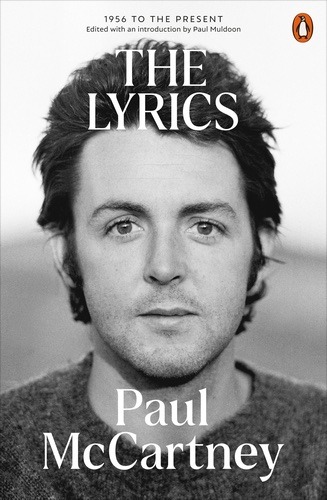
Book Review: Paul McCartney - “The Lyrics: 1956 to the Present” (Paperback edition)
Dear sir or madam, you might read Paul’s book. It took decades to write, you should take a look. It’s based on an oeuvre by a man named Mac. He was a Fab and now he is a paperback writer.
That’s great news for the Quarrymen, Beatles, Wings and Paul McCartney fans who were intimidated by the heft - both in weight and price - of 2021’s “The Lyrics: 1956 to the Present.” The two-volume, $100 coffee-table book is now an affordable ($30), portable read with seven additional songs, including “Day Tripper,” “Magical Mystery Tour” and “Bluebird,” bringing the total number of numbers examined to 161.
And a book like this - a bathroom reader ideal for picking up and thumbing through - works better in this format. Sure, the photos are smaller and their quality is diminished, but these “Lyrics” are accessible anytime and anyplace reading without deep concentration is desired.
And while the music is at least as important to McCartney’s fans as are his words, McCartney himself seems to place more value on the lyrics and the infinite possibilities represented on every blank page.
“Musicians get only 12 notes to work with and in a song, you often use only about half of them,” he says. “But with words, the options are limitless.”
Across nearly 600 pages, McCartney discuses the inspiration for his many songs and the process of composing them with co-writer Paul Muldoon, who puts McCartney’s thoughts into cogent story form and penned a fresh introduction for this reissue.
In that way, “The Lyrics” serves as the autobiography McCartney will never write. For while the former Fab never kept diaries, “What I do have are my songs, hundreds of them, which I’ve learned serve much the same purpose,” McCartney writes in the Forward.
“And these songs span my entire life.”
Which leads to the one big issue with “The Lyrics.” Rather than chronicling McCartney’s artistry by presenting the songs in chronological order - thereby allowing readers to easily see and assess his evolution - the compositions appear alphabetically; from “All My Loving to “Your Mother Should Know,” when 1956’s “I Lost My Little Girl” through to McCartney III’s “Women and Wives” would’ve been vastly more illustrative of the composer’s long and winding road from young Liverpudlian upstart to elder song stylist of the world.
But readers just have to let it be - again, easier to do in this compact presentation - and jet to the bookstore for the latest from McCartney and his temporary secretary Muldoon.
Grade card: Paul McCartney - “The Lyrics: 1956 to the Present” (Paperback edition) - B+
3/4/24
#paul mccartney#the lyrics: 1956 to the present#paul muldoon#the quarrymen#the beatles#paul mccartney and wings
3 notes
·
View notes
Text
“He acknowledges that the interplay of Lennon and McCartney was 'nothing short of miraculous', describing how they 'wrote with two guitars'. 'The joy of that was that I was left-handed and he was right-handed, so I was looking in a mirror and he was looking in a mirror.'”
—Paul McCartney, The Lyrics: 1956 to the Present

“I think Linda put her finger on it when she said me and John were like mirror images of each other.
"Even down to how we started writing together, facing each other, eyeball to eyeball, exactly like looking in the mirror.''”
—Paul McCartney, Uncut Magazine, July 2004 (x)

“John and Paul would sit opposite each other by the fireplace. As Paul was left-handed their guitars went the same way and each could enjoy the mirror effect of watching the other’s fingers shape the chords as if they were his own.
Paul would later call these ‘eyeball to eyeball sessions’ and he’d be treated to something few witnessed: John put his glasses on. Only rarely did they leave his pocket, even though without them he could barely see a thing. Almost in each other’s face, John and Paul quickly gained an unusual closeness, little or nothing hidden. Paul noticed that ‘John had beautiful hands.’”
— Tune In: The Beatles: All These Years, Vol. 1 by Mark Lewisohn (x)

“(…) most of the time we would sit down opposite each other with our two guitars. And because I was left-handed, when I looked at John I would see almost a mirror image of myself, I’d be playing the guitar as it were upside-down, he’d be reading me; upside-down, so we could clearly see what each other was doing, almost what you were doing yourself.”
— Paul McCartney, Many Years From Now - Barry Miles (x)
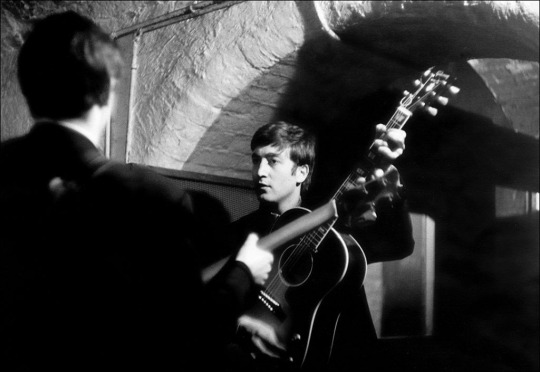
“The lights in the studio were turned off to set the mood; the sole source of illumination was a table lamp next to the wall. The two beatles, lifelong friends and collaborators, sat on high stools, facing each other, studying each other’s lips intently for phrasing. Watching them, I remember thinking that John’s and Paul’s voices were so different yet so perfectly complemented each other’s, just like their personalities and approach to music-making.”
—Here, There and Everywhere by Geoff Emerick (On the recording of She’s Leaving Home). (x)

“So I had to learn upside down. It’s funny: John learned upside down, too, because of me-because mine was the only other guitar around for him, if he broke a string or didn’t have his. That’s more unusual; left-handed guys can nearly always play a straight guitar.”
—Paul McCartney, interview w/ Tom Mulhern. (July, 1990) (x)

“On one occasion that still resonates for those involved, the Quarry Men went to a party in Ford, a village on the outskirts of Liverpool, out past the Aintree Racecourse. “John and Paul were inseparable that night, like Siamese twins,” says Charles Roberts, who met them en route on the upper deck of a cherry red Ripple bus. “It was like the rest of us didn’t exist.””
—the beatles: the biography, bob spitz (x)
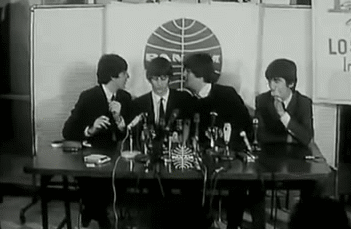
“I was fortunate enough to see them together many times in the late 60’s, and have always been fascinated by what I saw/heard: they finished each other’s sentences, laughed together, just seemed totally in sync. I was a 15-year-old girl, but I did notice that about the two of them and will never forget it.”
—Lizzie Bravo, apple scruff, on John and Paul (x)

“Years later, Paul told his brother that he loved his photo of the “I Saw Her Standing There” writing session because it captured how it really was—“the Rodgers and Hammerstein of pop at work.” Writing “eyeball to eyeball” as John said, they weren’t just frontmen for a rock group; they were composers working in concert. Having already pledged to co-credit all their work, around this time they made it formal, taking equal shares in a company called Northern Songs that would control their publishing.
“Historically,” writes Mark Lewisohn in The Beatles: All These Years, “joint-songwriter agreements enumerated splits of 90:10, 85:15, 80:20, 75:25, 67:33 and every other fiddly fraction down to 50:50. But John and Paul went halves all the way, closeness and ambition shared and matched.”
Now every lick of music that either one produced (regardless of the other’s actual contribution) would be both literally and metaphorically—both legally and emotionally—co-owned.”
—Joshua Wolf Shenk, Powers of Two: Finding the Essence of Innovation in Creative Pairs (2014) (x)

“It was like a tug of war. Imagine two people pulling on a rope, smiling at each other and pulling all the time with all their might. The tension between the two of them made for the bond.”
—George Martin on Lennon/McCartney (x)

116 notes
·
View notes
Text
“Sometimes, though, I certainly thought John was being a complete idiot. Even though I was younger, I would try to explain to him why he was being stupid and why something he’d done was so unlike him.”
— Paul McCartney, The Lyrics: 1956 to the Present
#this is so so so funny to me#little baby Paul just watching John do something#and then being like ‘John that was so out of character for you :/‘#I just love how he says ‘unlike him’#instead of saying that he was doing someting wrong#my quotes#paul mccartney#john lennon#rereading the lyrics
254 notes
·
View notes
Text
Lovely Rita
Sheff: “Lovely Rita”? John: That’s Paul, writing a pop song. Sheff: Was there really a Rita, do you know? John: Nah. Sheff: A meter— John: He makes a lot up, like a novelist, you know. Sheff: Uh— John: You hear lots of McCartney-influenced songs going on, now on the radio. These stories about boring people doing – being postmen, and secretaries, and writing old – I – you know. I’m not interested in writing third[-person], but I like to write about me. ‘Cause I know about me. I don’t know anything about secretaries, and postmen, and – [laughs] whatever.
(John Lennon, 1980, All We Are Saying by David Sheff, 2020)
Nobody liked parking attendants, or meter maids, as they were known in that benighted era. So, to write a song about being in love with a meter maid – someone nobody else liked – was amusing in itself. There was one particular meter maid in Portland Place on whom I based Rita. She was slightly military-looking. I know it’s a terrible thing to say, but those meter maids were never good-looking. You never heard anybody say, ‘God, that’s one stunning parking attendant.’ In any case, I caught a glimpse of Rita opposite the Chinese embassy in Portland Place. She was filling in a ticket in her little white book. The cap, the bag across her shoulder. It’s sheer observation, like painting en plein air.
(Paul McCartney, The Lyrics: 1956 to the Present , 2021)

‘Lovely Rita’ handwritten lyrics by John Lennon, with additional notes by Paul. Written on the reverse of an invitation to the Million Volt Light and Sound Rave held at the Roundhouse, London, 1967 (from Paul McCartney, The Lyrics: 1956 to the Present , 2021)
#john lennon#paul mccartney#lovely rita#the songs we were singing#interview: john#interview: paul#david sheff
49 notes
·
View notes
Text
Genazo cheat sheet: Blink and you'll miss it edition
Another post where I try to list interesting details and tidbits about the movie, easter eggs, and such. I will try to follow the movie chronologically, but there might be some back-and-forth. Of course, this will include spoilers. If you're interested about Gegege no Nazo trivia and context, I wrote two more posts on the subject, here and here.
This movie is packed with little details that gives it insane rewatch value (I went to the theaters too many times...), either as references, easter eggs, or small touches that give not only historical accuracy, but also breathe more life into the characters and the world they inhabit. Let's go for another deep dive under the cut!
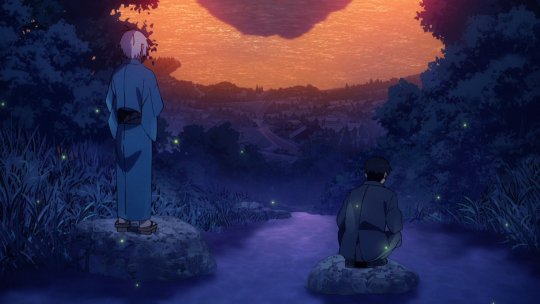
- Opening scene, present time
Yamada
His name and appearance evokes Salaryman Yamada, a character part of Mizuki Shigeru's star system. I won't go through all of them, but multiple characters in Genazo are part of that star system, like the section chief and the president of the blood bank, some of Osada's henchmen, etc. (here a star system refers to the use of a rotating cast of characters put into different roles through different stories but retaining key characteristics, either in design, personality, etc. Tezuka Osamu is known for this practice as well.) But specifically, Yamada reminds me of Joho-ya, "The informant", or "Hunter" (in Inka-subs), from Akuma-kun!
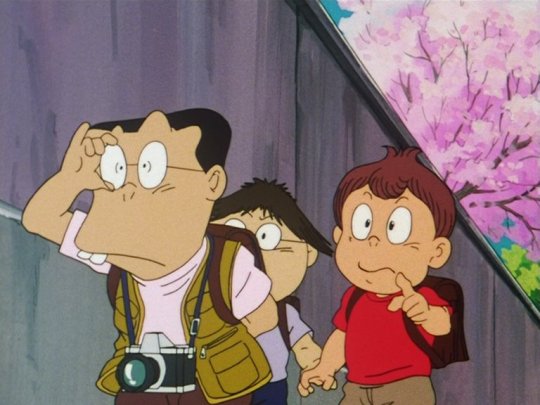
Ruins of Nagura village
As Kitaro's group and Yamada go through the village, you'll notice obvious items that played a part in the movie : the Sengoku-era armor, the hospital beds, Tokisada's ball form, etc. In the shot where Medama Oyaji says "The time has finally come, 70 years later...", Katsunori's car is in the foreground. Yamada stumbles upon the armor which I already mentioned, and is fairly obvious, but please notice the skull on the helmet: its left eye is worn-out! He then gets jump-scared by an Ichimatsu doll, which seems to have belonged to the little girl coughing in the train Mizuki and Gegero rode to Nagura village. Interestingly, though the patterns on the fabric are different, she shares the color of her kimono with Sayo, and both wear a bow in their hair. Finally, when Yamada points his flashlight at a window, a ghost appears for a frame or two, wearing a headdress making it looks like someone working for the Ryuga family. Which brings us to our next point... !
Hidden yokai and ghosts.
Mizuki Shigeru's daughter, Mizuki Etsuko, wrote the lyrics for Gegege no Kitaro 6th series' 3rd ending theme : "Mienkeredomo orundayo", "You can't see them, but they are here".
And indeed, if you look closely, or if you close one eye, you'll find that yokai have been present in the story way before Gegero made Mizuki notice them. Frankly, I don't know if I found them all, and what I can show you is mostly thanks to the joint effort of movie-goers who shared their findings online, but here are those I could spot and screenshot! (if you found more, Pleaaaaaase!!! Let me know!)

First, the ghost lady in the opening scene.
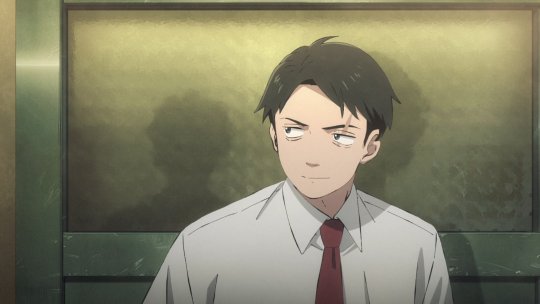
Mizuki casting two shadows in the blood bank office.

The tengu-like face appearing on a tree trunk as Mizuki enters Nagura village.
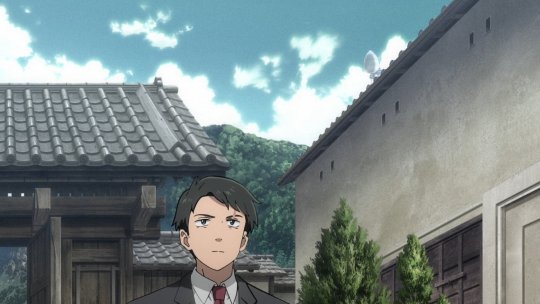
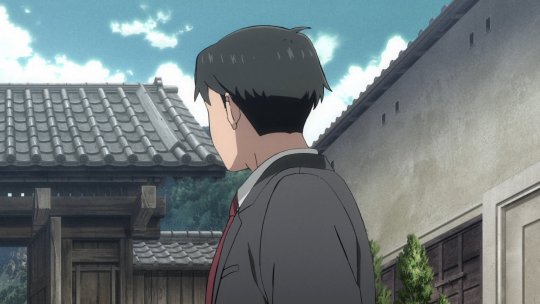
Kashabo, sitting on a tile as Mizuki enters Ryuga mansion grounds.

Probably Ikkenya no Yoju's paw, whom will appear again later in the movie, when Nezumi comes to give the diary to Mizuki in the storehouse.

The night after Tokimaro was appointed new family patriarch, Yuurei akago appear on the shelf in the back. (and these are actually pretty easy to spot, if you aren't so focused on Mizuki's cleavage. Yes. I know. Don't hide it.)
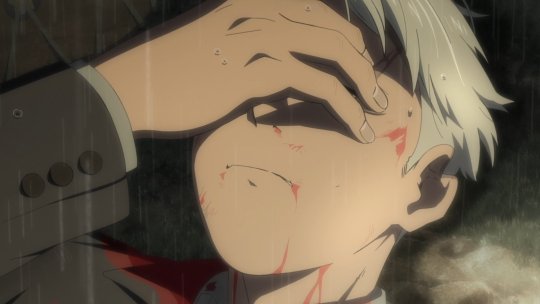
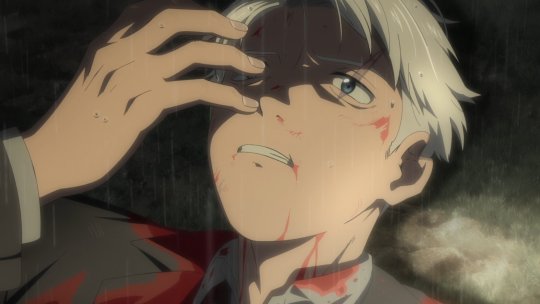
A soldier's helmet appearing next to Mizuki and disappearing a few frames after.
I read about more findings on social media, but it's all I collected myself for now!
Showa 31, Tokyo.
Or 1956.
Trash in the water, a cramped, shabby strict in the foreground, the blood bank, and in the background, factories releasing smoke. Far from the Tokyo that Tokiya and Sayo imagined, right?
As I mentioned in another post, the people waiting in the stairs came to sell their blood, and most of them probably do this for a living.
The celestial eye goldfish, or Choutengan, heavily bred in Japan and popular in art, are only found in captivity. They lack a dorsal fin, have limited vision, and can only be kept in aquarium on their own.
Train to Nagura Village
"...Tokisada is the man behind that success story." A script note I should have included in the previous post but I forgot, oops. Mizuki calls Tokisada "立志伝中", risshidenchu, conveying the idea that he is someone who worked harder than everyone in order to achieve great success.
Mizuki smokes "Peace" brand cigarettes. Its name was chosen with hope for the future after the war.

It seems Mizuki brought only one pack of cigarettes with him, as a pack of "Peace" contains 10 cigarettes, and he is seen smoking 10 times throughout the movie. The first time is in this scene, inside the train.
Tobacco's price in Japan has historically been exceptionally low, and at the time period Genazo takes place in a consequent percentage of people smoked - with a lack of awareness for safety, especially in closed spaces and around children, which was sadly not exclusive to Japan. Notice the girl holding the Ichimatsu doll and coughing : one of Osada's henchmen is sitting across from her, looking in her direction. Later in the movie, inside the underground factory, a smaller patient is on one of the hospital beds coughing, as a concerned patient turns to look at them. The doll is seen thrown in the trash, and of course, found again by Yamada in present time.
"Many people are following behind you." The silhouettes behind Mizuki are similar to the Japanese military uniform seen in his war flashbacks. So it's his war companions following him, and not the ghosts of enemies.
(a lot of points from the taxi drive to Mizuki's arrival in Naguramura I feel I already covered in other posts, so let's jump ahead a little bit.)
Reading Tokisada's will
Staff has cited The Inugami Family, movie adaptation of the novel The Inugami Curse as an inspiration for Gegege no Nazo. It's at the most explicit in this scene.
Tokimaro wears a sokutai outfit associated with noblemen of the Heian period. He also has teeth painted black, a practice called ohaguro, popular again between the Heian and Edo periods, mostly for cosmetic purpose ; and white makeup. Mizuki mentions how Tokimaro hasn't made public appearances in a long time due to poor health. Is the makeup for concealing his health...? In a previous post I mentioned how Toshiko, Hinoe and Otome share a motif reminiscent of the "inoshikachou" (boar, deer, butterfly) card combo in Hanafuda. Tokimaro's design is reminiscent of the Ono-no-Michikaze Hanafuda card.
Tokimaro mentions not being allowed to take a wife, surely not to dilute Tokisada's blood.
A maid places a zabuton cushion for Mizuki to sit on, just like everyone else in the room. However, during the entire scene, Mizuki keeps kneeling with his head low : Otome is already not pleased by his presence, but on top of that the maid placed the zabuton between two tatami. Tatami's edges are covered with cloth, and the fancier ones are embroidered with the family's emblem ; it would be considered rude to step and sit on it. He was also never invited to sit by any of the Ryuga, so he remains kneeling next to the zabuton.
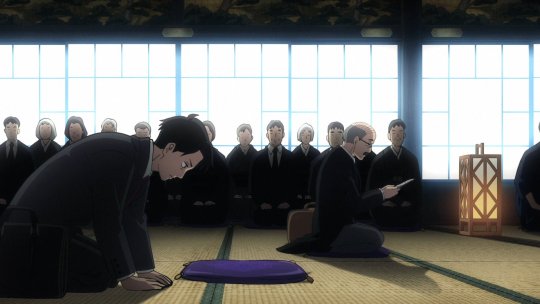
Tokimaro's death, Gegero's arrival
"I really hate conflict, you know. How about it? Why don't we all take a bath together and relax ?" Kitaro's father's love for baths is well known as Medama Oyaji. In the Birth of Kitaro manga, he also mentions how the Ghost Tribe are peaceful people.
It's a rainy morning, and when Osada's men attempt to behead Gegero, Mizuki rushes outside shouting to stop them. He's only wearing socks in that scene, which is why he goes barefoot in the next scene when he's in the room where Gegero is locked in.
"This person has brought calamity upon the village..." In the shot where Osada says this line, he's drawn wearing a ring. I'm not sure if it's intentional or an animation mistake, but I think it's the only scene he's seen wearing it.
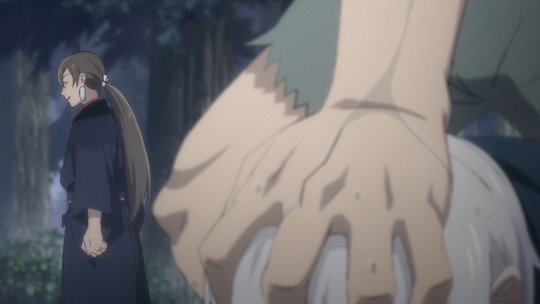
Night after the murder
Otome feels weak, and Osada doesn't just catch her as she falls, he tightens the embrace as if comforting her in a hug. In the following scene, it seems Hinoe got money from Otome, who is drinking red wine.
In the jail cell room, Mizuki is eating a classic meal of white rice, grilled fish, miso soup, and takuan (yellow pickled daikon radish). Gegero is eating a much lighter meal of brown rice and takuan sliced so thin it's see-through... In the previous scene where Osada, Otome and Hinoe are talking, Osada mentions that the room with the jail cell is in his quarters, which is why Tokiya was able to come in. Mizuki was also given a different yukata than when he was sleeping in the annex room of the Ryuga.
Gegero tells Mizuki that "Some people are not worth engaging in conversation." Indeed, he tried to warn Mizuki in the train that hell was awaiting him, but he didn't listen and came to Nagura Village anyways...
Asking Katsunori to let Gegero out
On the way, Mizuki passes by an old lady wearing a headdress and rubber gloves.
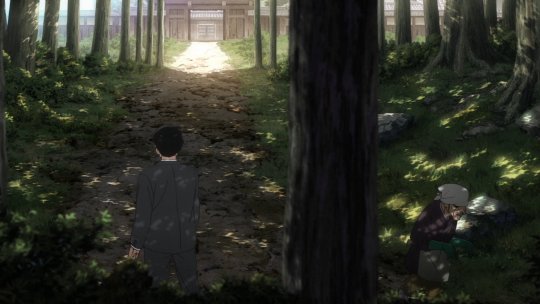
She's probably coming from or going to the underground factory where M is produced, and is also likely the ghost Yamada caught in his flashlight at the very beginning of the movie.
Hinoe is seen drinking alcohol as she peeks at Sayo and Mizuki from the window. In the room is a man in a futon, and a suitcase full of jewellery. The day before, in the scene where Otome, Osada and Hinoe were together, Hinoe was counting money she probably got from Otome, promising she wouldn't waste any of it. It seems she spent it in jewellery from the man in the futon, who is probably an outsider.

Hinoe is watching the scene from this balcony, and you can see two sets of tire tracks : the ones going straight is from Katsunori's car who just passed by. So the ones turning are probably from Hinoe's visitor, the jewellery seller, coming from outside the village. Had Mizuki paid a little bit more attention, he would have realized that Otome lied about the landslide at this point...!
In a previous post I talked about Tokimaro and Katsunori's placement in the succession scene, Katsunori sitting in front of a dragon, placed inside its maw.
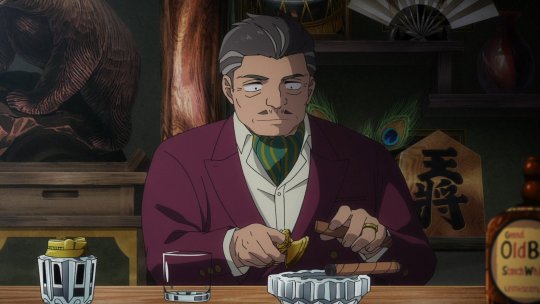
This time, behind him are displays of his vanity : a replica of the "King" (osho) shogi piece, and peacock feathers matching the color of his cravat. He's drinking Grand Old Parr Scotch whiskey, contrasting with Otome drinking red wine a few scenes earlier.
First time on the forbidden island
In front of the well, "呪" (kashiri) "Curse" is written on the torii gate.
(lots of important things happening that I already covered in older posts, so let's flash forward again)
Back at Osada's house jail cell
Gegero is eating zaru soba. They are cold buckwheat noodles that you dip in tsuyu sauce before slurping. It's a great dish to have during the hot Japanese summer! There are two ozen (low dining table/trays) in front of him, one with the soba, and the other with an empty spoon and bowl. It seems that this time, Mizuki shared his dinner with Gegero.
Discussing next plans
"And as long as [the Kyokotsu] doesn't have a vessel in the village." Here, Gegero specifically uses the word yorishiro which I chose to replace with "vessel", but yorishiro is a word specific to shintoism. It refers to an item or body that can attract and host a kami (deity). You may have seen before shimenawa ropes tied around rocks or trees - they signify that a kami resides inside, making those yorishiro. It's possible that at this point in the story, Gegero might have already figured out Sayo.
After finishing his popsicle, Mizuki flips the stick and looks at it, then seems a little bit disappointed. Some popsicles have written on their stick either hazure (lose) or atari (win), on the end which is visible only after finishing the popsicle - had Mizuki gotten a win, he could have had another popsicle for free! Aww...
Sayo and Mizuki on the balcony
Sayo wears a fashionable, western dress. She may have gotten it from outside the village, possibly from Katsunori. From this point, she starts calling Mizuki "Mizuki-san" instead of "Mizuki-sama", closing the gap between them.
Moonlit talk in the graveyard
Throughout the movie, you can see many electric poles, but in this night scene, no lights are on at night except from Tsurubebi :
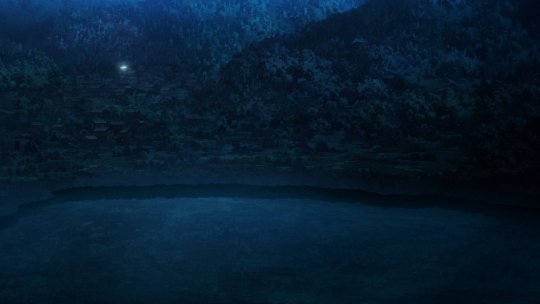
It's possible that most of the electricity is used in the underground factory.
"I saw it in the south..." When Mizuki mentions the south, he means Rabaul, New Guinea.
After lighting his cigarette with Tsurubebi, Mizuki notices he took his last one (the tenth) and crumple the empty cigarette pack in his pocket. It's why he shares it with Gegero instead of giving him a new one ; an interesting twist of fate right when Mizuki asks himself if he will have his own fateful encounter one day.
Gegero and his wife enjoyed "cream soda", which I left as is in the subs, but I realize that these are actually called soda floats in English, oops. Melon soda floats are heavily associated with the Showa era ; go to any vintage store, museum gift shop, etc and you'll find amongst retro goods something melon cream soda themed. (Pancakes and "pudding a la mode" are desserts with a similar iconic retro vibe) Cherries are also a known favourite of Medama Oyaji!

Their date spot is in Asakusa, Tokyo. You can see Sumida river in the background, with what I wrongly assumed to be Ryogoku bridge at first, but is actually Kototoi bridge. Starting from there you can find the exact spot : The rooftop amusement park "Sportsland", opened in 1931 in the Matsuya mall building. The mall remains nowadays, but not the park, sadly.
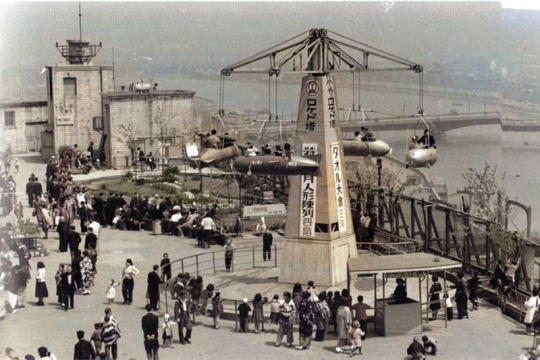
Picture source

flash forward to...
After Gegero's capture
In front of the shrine, when Otome reveals the role of women within the Ryuga family, Osada's shoulders slump, pained by the thought.
Inside the underground factory, you can see the same headdress and rubber gloves wearing old lady, grinning while at work.
As I stated earlier, we meet the coughing little girl from the train again here.
Sayo asks Mizuki, "Are you going to help that person from the Ghost tribe?" even though she has never met Gegero on screen - Either she was spying on Mizuki and Gegero, or she figured it out after reading Tokimaro's diary. "If I run away now, this guy will laugh at me." Mizuki says. Indeed, Gegero accepted to work with Mizuki on one condition : "Whatever you see, do not run away."
Bloodbath
Sayo's Kyokotsu releases more smaller Kyokotsu from its rounded stomach, as if giving birth.
During the bloodbath, one of the Urakido is not killed by Kyokotsu, but by one of his fellow man who accidentally slashed his throat while swinging his sword.
When Otome calls Osada for help, he shouts the usual okusan, "Madam!", followed by her name, "Otome!" in despair.
The anger Sayo feels for Mizuki is different than the grudge she bears towards the Ryuga and the villagers ; she chooses to strangle him with her own hands rather than through Kyokotsu. When Gegero said that he felt pity for Mizuki, Mizuki similarly went for Gegero's throat.
The bottom of the well
"By now, [Tokiya] must be bullied in hell in my place." "今頃 余に代わって 地獄で 獄卒どもに いじめられとるだろう" ima goro yo ni kawatte, jigoku de gokusotsudomo ni ijimeraretoru daro Literally, "by now, he must be bullied by the Gokusotsu in hell in my place." Gokusotsu are the guardians of Hell - they are seen in Gegege no Kitaro anime, working for Enma Daio. It's wrong of me to have omitted them in the subs, but I didn't know how to phrase it with proper length and timing. I'm sorry.
Mizuki climbing the stairs dragging the axe behind him mirrors Gegero's arrival in Nagura Village - the sound of the axe hitting the ground replacing the karan koron of Gegero's geta sandals.
Gegero places the chanchanko for protection on Mizuki's shoulders, but later Mizuki put it on Gegero's wife instead - Mizuki didn't hear Gegero says his "my friend, the future in which you live is something I wanted to see with my own eyes" line after all. At this point, Mizuki has nothing left to lose or look for himself, as highlighted in the shot where Gegero and his wife reunite, and Mizuki is lying as if dead on the foreground while Tokisada speaks of the bright future of Japan. He is ready to pay the price for his actions, even if it costs him his life.
When Gegero removes the seal on the pile of skulls, it's lodged in a skull's left eye socket.
Present time
Yamada promises that whatever happened in this village, he will "definitely write it down and pass it on." His article was printed in the pamphlet sold at the time of the movie's theatrical run.
Ok... phew! I think that's enough for now. If you've read this far...congratulations!! Unfortunately I may still have things to say in the future, but that post is way too long already. Thank you for reading! I hope this helped you notice a few things. Enjoy the movie!

103 notes
·
View notes
Text
Paul trying and sometimes failing to be chill about Yoko
“I told John on the phone the other day that at the beginning of last year I was annoyed with him. I was jealous because of Yoko, and afraid about the break-up of a great musical partnership.”
1970, Paul to Ray Connolly in the Evening Standard
I’d been able to accept Yoko in the studio, sitting on a blanket in front of my amp. I’d worked hard to come to terms with that. But then when we broke up and everyone was now flailing around, John turned nasty. I don’t really understand why. Maybe because we grew up in Liverpool, where it was always good to get in the first punch of a fight.
The Lyrics: 1956 to the Present
"It just became impossible for me to work with Yoko sitting there watching us," says Paul. "I wanted to write simple things like 'I love you girl' and every time I knew she was listening I felt I had to come out with someone clever and avant garde! "I'm not blaming Yoko -- I'm blaming me. It was no more John's fault for falling in love with Yoko than it was mine for falling in love with Linda. It just meant that we didn't work together anymore. We tried but it didn't work."
Paul McCartney, in his first magazine interview since the split, tells FLIP's Keith Altham... "THE BEATLES ARE FINISHED!"
We didn’t accept Yoko totally, but like I say, how many groups do you know, these days [who would]? I mean, it’s a joke. It’s like Spinal Tap! I mean, it’s Spinal Tap! A joke!
September, 1986 (MPL Communications, London)
And in John’s thing, you know, when as – you obviously know – he was going through a lot of pain when he said a lot of that stuff. And he felt that we were, um, being kind of vindictive towards him and Yoko. In actual fact I just answered a question on an American TV thing – I think we were quite good, looking back on it, and knowing people in life. Many people would’ve just downed tools with a situation like that and just have said: “Look man, she’s not sitting on our amps while we’re making a film.” I mean, that wouldn’t be unheard of. I mean, Sean Penn... do you know what I mean? Most people would just say, “We’re not having this person here. Don’t care how much you love her.”
But we were actually quite supportive. Not supportive enough, you know; it would have been nice to have been really supportive because then we could look back and say, “Weren’t we really terrific?” But looking back on it, I think we were okay. We were never really that mean to them. But I think a lot of the time John suspected meanness where it wasn’t really there.
September, 1986 (MPL Communications, London)
I’ve already mentioned how in September 1969 we were in a meeting and talking about future plans, and John said, ‘Well, I’m not doing it. I’m leaving. Bye.’ In the ensuing moments, he was giggling and saying how this felt really thrilling, like telling someone you’re going to divorce them and then laughing. At the time, obviously, that was wildly hurtful. Talk about a knockout blow. You’re lying on the canvas, and he’s giggling and telling you how good it feels to have just knocked you out. It took a while, but I suppose I eventually got with the programme. This was my best mate from my youth, the collaborator with whom I’d done some of the best work of the twentieth century (he said, modestly). If he fell in love with this woman, what did that have to do with me? Not only did I have to let him do it, but I had to admire him for doing it. That was the position I eventually reached. There was nothing else I could do but be cool with it.
Paul McCartney, on “Get Back”. In The Lyrics (2021).
MANSFIELD: But, you know, [after John showed me the pictures of himself and Yoko nude for the album cover of Two Virgins], I asked Paul about this. And this, to me, is indicative of their relationship, maybe as much as anything I [had] ever heard. I said, “Paul, you know, what do you think about this?” And Paul says, “I don’t know.” He said, “I don’t really agree with John. But I just am going to figure that John’s ahead of me on this, and that someday I’ll understand and I’ll catch up. So, you know, I’m okay.” ROSEN: And what did that reaction tell you about their relationship? MANSFIELD: That it was an extremely deep relationship.
Ken Mansfield (record label executive and Apple Records U.S. manager), interview w/ James Rosen for Fox News. (December 4th-5th, 2007)
John and Yoko had to visit Sir Joseph Lockwood of EMI with the nude photos to ensure that he would allow their use and there wouldn’t be any censorship problems. Although he personally didn’t like the album or photographs, Paul accompanied the two of them to their meeting. Sir Joseph thought that the fans would be outraged and the Beatles’ reputation would be damaged, but Yoko told him: ‘It’s art.’ Lockwood said: ‘Well, I should find some better bodies to put on the cover than your two. They’re not very attractive. Paul McCartney would look better naked than you.”
The Paul McCartney Encyclopedia by Bill Harry. (also... rekt lmao)
So that – I think, in order to kind of say to Yoko, “Look, my life is now yours,” he had to say things like, “The Beatles were bastards, we were total jerks, we never wrote anything good…” Which I think was rubbish, basically. And as I say, you have to realize that some of that time he was on heroin – so he’s not going to be just talking absolutely lucidly all the time, there. Some of the times, he was having other sorts of problems…
1989, Paul
And I think we would all have continued the Beatles, but Yoko came along, John fell wildly in love with her, he needed a big, big change in his life and he got it! He came to live in New York, he kind of threw over all his English [pause] contacts and everything. And, you know, can’t blame him! If that’s what he wants to do in his life! So we had to kind of, fade into the background to allow them to have their relationship. What were we gonna do, ringin’ him up? ‘Hey John, you know, hey, come and see me! Leave Yoko!’ No, that obviously never gonna happen. [pause] See, you had to let him do what he wanted, and he- he did you know… And he enjoyed it.
Paul McCartney on John’s early 70′s attacks as a sign of his feelings towards him. Interviewed by Bob Costa, 1991.
“. . . I mean, I think really what it was, really all that happened was that John fell in love. With Yoko. And so, with such a powerful alliance like that, it was difficult for him to still be seeing me. It was as if I was another girlfriend, almost. Our relationship was a strong relationship. And if he was to start a new relationship, he had to put this other one away. And I understood that. I mean, I couldn’t stand in the way of someone who’d fallen in love. You can’t say, “Who’s this?” You can’t really do that. If I was a girl, maybe I could go out and… But you know I mean in this case I just sort of said, right – I mean, I didn’t say anything, but I could see that was the way it was going to go, and that Yoko would be very sort of powerful for him. So um, we all had to get out the way.”
Paul McCartney, interview with German tv program Exclusiv, April 1985.
PAUL: ‘Cause she’s very much to do with it from John’s angle, that’s the thing, you know. And I – the thing is that I – there’s— Again, like, there’s always only two answers. One is to fight it, and fight her, and try and get The Beatles back to four people without Yoko, and sort of ask her to sit down at the board meetings. Or else, the other thing is to just realize that she’s there, you know. And he’s not gonna sort of – split with her, just for our sakes.
Twickenham, January 13th, 1969
PAUL: Yeah, see, that’s the thing. The only one time we’ve actually done it, she’s agreed. She really is alright. It’s like, it’s the thought of her being there when some of— [faltering] And then you don’t talk to John, so then he doesn’t talk to you, you know. And it’s like, you can screw it up just as much because she’s there, as – as John’s relying on her because she’s there. So that’s the thing. You know, but I mean, like, you’ll notice, if John – if you’re onto a beam with John about something, then he really isn’t, you know, he really won’t let Yoko talk about it. Because he knows when you’re on a beam, and he knows about it, and you’ll – you can talk straighter to him.
Twickenham, January 13th, 1969
‘All new wives don’t like their husband’s old friends or cronies,’ he replies. ‘I don’t think [Yoko] liked Paul. I think Paul was ready to like Yoko. Maybe she saw Paul as a threat. It was a partnership. The partnership should have been John and Yoko, not John and Paul. I am not saying it was a deliberate process, but it was a natural process. John had a new partner: she. Yoko Ono. It was going to be John and Yoko’s songs and not Paul and John’s songs.’
Don Short (newsman), c/o Sandra Shevey, The Other Side of Lennon.(1990)
As the meeting was drawing to a weary close, John, not this day with Yoko, who hadn’t seemed particularly connected with what was going on, said he wanted to play us a tape he and Yoko had made. He got up and put the cassette into the tape machine and stood beside it as we listened. The soft murmuring voices did not at first signal their purpose. It was a man and a woman but hard to hear, the microphone having been at a distance. I wondered if the lack of clarity was the point. Were we even meant to understand what was going on, was it a kind of artwork where we would not be able to put the voices into a context, and was context important? I felt perhaps this was something John and Yoko were examining. But then, after a few minutes, it became clear. John and Yoko were making love, with endearments, giggles, heavy breathing, both real and satirical, and the occasional more direct sounds of pleasure reaching for climax, all recorded by the faraway microphone. But there was something innocent about it too, as though they were engaged in a sweet serious game. John clicked the off button and turned again to look toward the table, his eyebrows quizzical above his round glasses, seemingly genuinely curious about what reaction his little tape would elicit. However often they’d shared small rooms in Hamburg, whatever they knew of each other’s love and sex lives, this tape seemed to have stopped the other three cold. Perhaps it touched a reserve of residual Northern reticence. After a palpable silence, Paul said, “Well, that’s an interesting one.” The others muttered something and the meeting was over. It occured to me as I was walking down the stairs that what we’d heard could have been an expression of 1960s freedom and openness but was it more likely that it was as if a gauntlet had been thrown down? “You need to understand that this is where she and I are now. I don’t want to hold your hand anymore.”
Michael Lindsay-Hogg (filmmaker), Luck and Circumstance: A Coming of Age in Hollywood, New York, and Points Beyond. (2011)
“Paul, in his usual way, tried to be the nice guy and was open-minded about John’s weird choice,” says Brown. “He invited them to stay at [his house in] Cavendish Avenue for a while.” The day after Cynthia’s return, they moved into the second-floor guest bedroom and made themselves at home. “But the problem was that Yoko wasn’t a very warm person—not even able to say thank you in response to anything Paul did for them. And he went miles out of his way to make them feel welcome, being a nice guy. So that didn’t last very long.”
The Beatles – Bob Spitz
PMcC: I always had the impression that Klein had got them to go with him because he was the only one who was ever sympathetic to Yoko. Klein saw the Yoko connection and told Yoko that he would do a lot for her. Give Yoko a lot. And that was basically what John and Yoko wanted, recognition for Yoko. We found her sitting on our amps, and like a football team, an all-male thing, you really don’t like to see a chick in the middle of the team. It’s a disturbing thing, they think it throws them off the game or whatever it was, and these were the reasons that I thought, Well, this is crazy, we’re gonna have Yoko in the group next.
SG: She was giving you advice in the studio?
PMcC: Well, she was definitely turning up. Looking at it now, I feel a bit sorry for her because, if only I had been able to understand what the situation was and think, wait a minute, here’s a girl who’s not had enough attention. I can now not make this into a major crisis and just sort of say, “Sure, what harm is she doing on the amps?” I know they would have really loved me. You know, we didn’t like Yoko at first, and people did call her ugly and stuff, and that must be hard for someone who loves someone and is so passionately in love with them, but I still can’t—I’m still trying to see his point of view. What was the point of all that?
All You Need is Love: The Beatles in Their Own Words by Peter Brown and Steven Gaines (thank you @tavolgisvist!)
Examples of failure to be chill:

PAUL: But it’s just funny to sort of realise that after this is all over, you’ll be off in a black bag somewhere – on the Albert Hall, you know. JOHN: Yes. PAUL: And sort of doing shows and stuff, and you know, digging— JOHN: Yeah, but I— PAUL: —digging that thing of it.
January 25th, 1969 (Apple Studios, London)
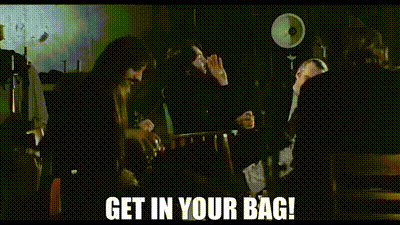
Yoko had evidently approached Paul McCartney about appearing in the film, as the Beatles' road manager Mal Evans penned in his diary: "PAUL HAS APPOINTMENT WITH JAPANESE LADY WHO WANTS TO PHOTOGRAPH HIS BOTTOM." Presumably Paul declined, and one must wonder if the same invitation might have been extended to John.
Chip Madinger, Lennonology Volume 1: Strange Days Indeed. (2015) (note: unforgivable rudeness on Paul's part to both Yoko and all of us who would have benefited from him featuring in "Bottoms")
“I was in India meditating about the album, when it suddenly hit me. I wrote Yoko telling her that I planned to have her in the nude on the cover. She was quite surprised, but nowhere near as much as George and Paul. “Paul gave me long lectures about it, and said ‘Is there really any need for this? ‘It took me five months to persuade them.
NEW MUSICAL EXPRESS, JUNE 7, 1969
He wasn’t happy. But the big things that were driving him mad were beyond me. He kept on working and writing, but when John came over, all he could talk about was how much he loved Yoko. That disturbed Paul. In spite of John’s obvious happiness, Paul stifled his jealousy with not-very-cute bursts of racist crap.
Francie Schwartz - Body Count
John & Yoko's perspective:
It’s the same. You can quote Paul, it’s probably in the papers, he said it many times at first he hated Yoko and then he got to like her. But, it’s too late for me. I’m for Yoko. Why should she take that kind of shit from those people? They were writing about her looking miserable in the Let It Be film, but you sit through 60 sessions with the most bigheaded, up-tight people on earth and see what its fuckin’ like and be insulted — just because you love someone — and George, shit, insulted her right to her face in the Apple office at the beginning, just being ‘straight-forward,’ you know that game of ‘I’m going to be up front,’ because this is what we’ve heard and Dylan and a few people said she’d got a lousy name in New York, and you give off bad vibes. That’s what George said to her! And we both sat through it. I didn’t hit him, I don’t know why.
I was always hoping that they would come around. I couldn’t believe it, and they all sat there with their wives, like a fucking jury and judged us and the only thing I did was write that piece (Rolling Stone, April 16th, 1970) about “some of our beast friends” in my usual way — because I was never honest enough, I always had to write in that gobbly-gook — and that’s what they did to us.
Ringo was all right, so was Maureen, but the other two really gave it to us. I’ll never forgive them, I don’t care what fuckin’ shit about Hare Krishna and God and Paul with his “Well, I’ve changed me mind.” I can’t forgive ’em for that, really. Although I can’t help still loving them either.
John Lennon: The Rolling Stone Interview, Part One
JOHN: But I understand how they felt, because if it had been Paul or George and Ringo that had fallen in love with somebody and gotten totally involved, suddenly… It wasn’t like, you know, somebody – George coming in and saying, “I’m going to work with Eric Clapton in a band now, and screw you.” It wasn’t that kind of thing at all. It was just suddenly this involvement.
December 6th, 1980: Andy Peebles talks to John and Yoko
“Lennon stated that “there’s some underlying thing about Yoko in [Get Back]”, saying that McCartney looked at Yoko Ono in the studio every time he sang “Get back to where you once belonged””
David Sheff, All We are Saying: The Last Major Interview with John Lennon and Yoko Ono
TRYNKA: ‘The Ballad of John And Yoko’, with Paul playing drums and bass, seemed like Paul’s tribute to you. Was that the case? YOKO: Yeah. I thought that was beautiful. Paul was trying to be diplomatic about the situation, try to make it well... He meant well. There were other instances where he’d do things that were meant well.
Yoko Ono, interview w/ Paul Trynka for MOJO. (May, 2003)
YOKO: Even now, I just read that Paul said, “I understand that he wants to be with her, but why does he have to be with her all the time?” JOHN: Yoko, do you still have to carry that cross? That was years ago. YOKO: No, no, no. He said it recently. I mean, what happened with John is that I sort of went to bed with this guy that I liked and suddenly the next morning I see these three guys standing there with resentful eyes. SHEFF: Do you think that kind of attitude from people was also jealousy? JOHN: It’s a kind of jealousy. People can’t stand people being in love. They absolutely can’t stand it. They want to pull you down in the hole they’re in.
John Lennon and Yoko Ono, interview w/ David Sheff for Playboy. (September, 1980)
‘He wanted me to be part of the group,’ Yoko says. ‘He created the group, so he thought the others should accept that. I didn’t particularly want to be part of them… I couldn’t see how I would fit in, but John was certain I would. He kept saying, ‘They’re very sensitive … Paul is into Stockhausen… They can do your thing…’ He thought the other Beatles would go for it; he was trying to persuade me.’”
Philip Norman’s 2008 biography Lennon
After the initial embarrassment, that how Paul is being very nice to me, he’s nice and a very, str- on the level, straight, sense, like wherever there’s something like happening at the Apple, he explains to me, as if I should know. And also whenever there’s something like they need a light man, or something like that he asks me if I know of anybody, things like that. And like I can see that he’s just now suddenly changing his attitude, like his being, he’s treating me with respect, not because it’s me, but because I belong to John. I hope that’s what it is because that would be nice. And I feel like he’s my younger brother or something like that. I’m sure that if he had been a woman or something, he would have been a great threat, because there’s something definitely very strong with me, John, and Paul.
Revolution Chaos Tape – Yoko Ono, June 4, 1968
"The line [the walrus was Paul] was put in partly because I was feeling guilty because I was with Yoko and I was leaving Paul. It's a very perverse way of saying to Paul: 'here, have this crumb, this illusion, this stroke - because I'm leaving.'" -John
Playboy, 1980
JOHN: And throwing in the line “the Walrus was Paul” just to confuse everybody a bit more. And because I felt slightly guilty because I’d got Yoko, and he’d got nothing, and I was gonna quit. [laughs; bleak] And so I thought ‘Walrus’ has now become [in] meaning, “I am the one.” It didn’t mean that in the song, originally. It just meant I’m the – it could have been I’m the – “I’m The Fox Terrier,” you know. I mean, it’s just a bit of poetry.
August, 1980: John talks to Playboy writer David Sheff about ‘Glass Onion’.
“Still, the real reason that people disliked Yoko was because she ordered them about and sent them on errands in a particularly rude way; she was brought up with servants, and that’s how she treated the staff of Apple. George found it particularly galling that she never gave the Beatles their definite article. He told me, ‘She would say, “Beatles do this” and “Beatles do that”, and we would say, “Uh, it’s the Beatles actually, love.” She’d look at you and say, “Beatles do this.”’ And he laughed and shrugged his shoulders. Whether Yoko was ever aware of the disruption her presence caused to the Beatles’ working practices I don’t know. Some people thought she was so involved in her own work and self-interest that she didn’t notice; others thought that it was a deliberate ploy to separate John off from the others.”
Barry Miles, The Zapple Diaries. (2015)
#the beatles#paul mccartney#john lennon#mclennon#he could only play nice for so long#the bag thing pissed him off too much
136 notes
·
View notes
Text
HOT 100 HCs: Emily Prentiss

Friends. Colleagues. I am starting a new thing (but not ending any old things, don't worry babes). I'm calling it HOT 100 Headcanons. Basically, I've created playlists for characters that include all the songs that they love and/or have shaped them in some way. I take cues from the canon characters (for example, canon Emily was a rocker in high school, so her playlist includes quite a bit of rock).
I don't know if anyone else will enjoy this or care about it and, frankly, I don't care. I really enjoyed making it, and I really do believe it's doing deep dives like this that help you really get to know a character (or your HC of them, anyway). Enjoy, if you're into that kind of thing!
HOT 100 HCs: Emily Prentiss
Note(s): When I think of the Criminal Minds characters, I always think of them as being Elite Team-age in the present. If Paget Brewster’s age roughly equals Emily’s, then Emily joined the BAU when she was 36/37. If we move the Elite Team timeline up so it starts in 2024, she’d have been born in 1987. That’s the date I work from when calculating these Hot 100 Lists.
(Also, the first parentheses is the date the song was released. The second is the age Emily was when it was released.)
Nat King Cole, “Nature Boy” (March 29, 1948) (N/A)
Emily’s grandfather didn’t have tapes or CDs at his chalet in the French Alps, but he did have a turntable, and Nat King Cole was one of his favorites to spin. Now it always reminds Emily of him. She still likes to spin Nat King Cole and dance with you in the living room.
2. Édith Piaf, “Milord” (May 8, 1949) (N/A)
Another record straight from her grandfather’s house. They listened to a lot of Édith Piaf, but this was her favorite as a little girl. She thought it was funny, and it helped her learn how to do uvular trills, since French wasn’t her first language.
3. Juliette Gréco, “Sur les quais du vieux Paris” (October 1951) (N/A)
Little Emily didn’t get to go to Paris much, mostly just as a stopover on the way to her grandfather’s. But whenever her grandfather brought her back to her mom, he’d take her around Paris for a day, and she always thought it was the most magical place in the world.
4. Georges Brassens, “Je Me Suis Fait Tout Petit” (February 2, 1956) (N/A)
Her grandfather played classical-style guitar and loved the work of Georges Brassens. He often played it and sang for Emily. Georges Brassens was a significantly better singer than her grandfather was, but sometimes Emily wishes she had a recording of her grandfather instead of Brassens. Nevertheless, listening to it still reminds her of sitting with him on the hillsides while he played.
5. Léo Ferré, “L’affiche rouge” (February 1961) (N/A)
Another favorite of Emily’s grandfather. He was a star of French chanson, a folk music tradition driven heavily by lyrics, almost like poetry put to music. Her grandfather would sometimes read her the poems first and then play her the songs afterward.
6. Marie Laforêt, “Marie douceur, Marie colère” (1966) (N/A)
One of Emily’s first favorite rock songs. She heard this version long before she even knew who Mick Jagger was and, to this day, she could defend in a dissertation-length essay why Marie Laforêt’s lyrics are better than the original.
7. Jacqueline Taieb, “Le cœur au bout des doigts” (1967) (N/A)
A dancing-in-the-living-room standby for Emily at her grandfather’s.
8. Patty Pravo, “La bambola” (May 1968) (N/A)
Emily didn’t discover this one until she lived in Italy, but it’s a perfect sad song, great for dramatically belting in your room or in the car. Which is exactly what she did for months after the asshole of a boy who knocked her up dropped her and she had to go through the abortion process almost alone.
9. Maxime Le Forestier, “San Francisco” (1971) (N/A)
One of the “newest” records her grandfather owned. He only conceded to buying it because Maxime Le Forestier covered so much of Georges Brassens’ work. He ended up loving it. Emily’s first instinct is still to pronounce “San Francisco” like Le Forestier does in this song.
10. Meat Loaf, “I’d Do Anything For Love (But I Won’t Do That)” (October 21, 1977) (N/A)
Inexplicably, Meat Loaf is one of the only English-speaking artists that Emily’s grandfather liked.
11. Lio, “Le Banana Split” (November 1979) (N/A)
Her grandfather hated this song so much, but she loved it, so he bought it for her anyway. Teeny baby Emily could not get enough of the word “banana,” in any language.
12. Grover Washington, Jr., “Just the Two of Us (feat. Bill Withers)” (1980) (N/A)
Emily’s mom loves Bill Withers. One of Emily’s best memories of childhood is dancing to this song with her mom. Now her favorite memory is dancing to it with you at your wedding.
13. Yazoo, “Only You” (August 16, 1982) (N/A)
A regular on Emily’s mom’s boom box when Emily was young.
14. Metallica, “For Whom the Bell Tolls” (July 27, 1984) (N/A)
Discovered during *Emily's teen rock era.*
15. Madonna, “Into the Groove” (July 15, 1985) (N/A)
Emily’s mom is a big Madonna fan, so there was a lot of Madonna in little Emily’s house.
16. Siouxsie and the Banshees, “Cities in Dust” (April 21, 1986) (N/A)
Discovered during *Emily’s teenage rock era*
17. Berlin, “Take My Breath Away” (May 13, 1986) (N/A)
Top Gun was Emily’s mom’s favorite movie for a solid decade of her childhood, so Emily was very familiar with the music. This song was her favorite.
18. Alannah Myles, “Black Velvet” (March 14, 1989) (1)
Emily will tell you that she remembers being young and trying on her mom’s makeup in front of the mirror to this song.
19. Metallica, “Enter Sandman” (August 12, 1991) (3)
Discovered during *Emily's teen rock era.*
20. Nirvana, “Smells Like Teen Spirit” (September 26, 1991) (3)
Didn’t discover Nirvana until her teen years, but Nevermind remains one of her favorite albums of all time.
21. Lara Fabian, “Je Suis Malade” (1994) (6)
Tiny little Emily heard this in a café in Paris with her mom and begged her mom to buy it on vinyl so she could bring it to her grandfather’s. Her mom obliged, mostly to shut her up, and Emily spent all summer listening to it. It was the first song that ever gave her chills. She still knows every word, still loves to belt it in the car, and still swears up and down that Lara Fabian’s version is better than Celine Dion’s.
22. Tori Amos, “Cornflake Girl” (January 31, 1994) (6)
Emily’s mom went through a real Tori Amos phase. Little Emily genuinely thought this song was about cereal and asked her mom to play it over and over again.
23. Beck, “Loser” (March 1, 1994) (6)
Little Emily loved the slide guitar and that the song said “loser,” which her mom did not let her call anyone.
24. Bush, “Comedown” (December 6, 1994) (7)
Emily was late to discover a lot of ‘90s and 2000s rock because it was hard to access non-mainstream American music abroad, but when iTunes came around when she was 13 or 14, she spent an ungodly amount of her mom’s money buying songs and albums, including this one.
25. Collective Soul, “December” (March 15, 1995) (7)
Discovered during *Emily’s teenage rock era*
26. April March, “Le Temps de l’amour” (October 20, 1995) (8)
Another favorite from her French summers. A sneak peak of later punk rock Emily.
27. April March, “Chick Habit” (October 20, 1995) (8)
Emily lords it over every gay she knows that she knew this song from the original album and not from But I’m a Cheerleader. But she does love But I’m a Cheerleader… This was her favorite CD for a solid year or more.
28. The Smashing Pumpkins, “Bullet with Butterfly Wings” (October 23, 1995) (8)
Discovered during *Emily’s teenage rock era*
29. OMC, “How Bizarre” (January 1, 1996) (8)
A favorite track on Emily’s favorite CD, Now That’s What I Call Music! 3.
30. Backstreet Boys, “Everybody (Backstreet’s Back)” (May 6, 1996) (8)
All the kids knew this one, in any country Emily visited or lived in.
31. Khaled, “Aïcha” (November 1996) (9)
Emily’s mom was the U.S. ambassador to Oman for a few years during Emily’s childhood. Emily learned Arabic quickly and tried very hard, as she did in all the places she lived, to fit in seamlessly with the people around her. So, of course, the songs she sang and danced to with her friends were the ones popular in Oman at the time.
32. Third Eye Blind, “Jumper” (April 8, 1997)
Discovered during *Emily’s teenage rock era*
33. Rachid Taha, “Ya Rayah” (August 5, 1997) (9)
Another favorite of Emily and her friends during her time in Oman. They even had a little choreographed dance they did all together.
34. Will Smith, “Miami” (October 3, 1997) (9)
Tiny Emily genuinely thought she was the baddest little bitch in the world for knowing all these lyrics, despite having never been to Miami or a club or anything.
35. Britney Spears, “...Baby One More Time” (January 12, 1999) (9)
Honestly, what ‘90s kid didn’t have a formative moment with a Britney Spears song?
36. Buena Vista Social Club, “Chan Chan” (September 16, 1997) (9)
Emily was an adult when she discovered Buena Vista Social Club, but they’re one of her very favorites on vinyl now. She started listening to them while she learned Spanish in college.
37. Green Day, “Good Riddance (Time of Your Life)” (October 4, 1997) (9)
Discovered during *Emily’s teenage rock era*
38. Hakim, “Wala Wahed” (1998) (10)
Emily’s mom was transferred to Cairo in 1998, where Emily had to start over again–but thankfully not with a completely new language. She really liked sha’bi music, and her best friend’s dad played drums in a jeel band.
39. Less Than Jake, “All My Best Friends Are Metalheads” (January 1, 1998) (11)
One of Emily’s earlier alt finds. She loved it.
40. Cher, “Believe” (October 19, 1998) (11)
Another favorite of Emily’s mom’s. On repeat in little Emily’s kitchen in Cairo.
41. Alaa Zalzali, “Akli Tar” (1999) (11)
Emily was obsessed with this song and the whole album because it combined two languages she knew and loved: Arabic and French.
42. Crazy Town, “Butterfly” (November 4, 1999) (12)
Emily loved this song so much, and she jokes that looking back it should have been a huge flag that she was gay.
43. A Perfect Circle, “Judith” (January 1, 2000) (12)
*Emily’s teenage rock era*
44. Anastacia, “I’m Outta Love” (February 29, 2000) (12)
Even Emily’s hard little rock heart still loved a pop anthem.
45. Pascale Machaalani, “Nour El Chams” (June 25, 2000) (12)
All the girls in Cairo wanted to be Pascale Machaalani. Think of her as the Beyoncé of Emily’s preteen years.
46. Rage Against The Machine, “Renegades” (December 5, 2000) (13)
One of the first rock songs Emily discovered and fell in love with. She still knows all the words.
47. Staind, “Outside” (May 22, 2001) (13)
*Emily’s teenage rock era*
48. System of a Down, “Toxicity” (September 4, 2001) (13)
*Emily’s teenage rock era*
49. Noir Désir, “La vent nous portera” (September 11, 2001) (13)
Even when she lived in the Middle East, Emily still spent summers with her grandfather in France. As always, he’d let her have a day in Paris when she flew in, and she always visited a music store to buy all the new French alt albums she could find.
50. Hoobastank, “Crawling In The Dark” (November 20, 2001) (14)
*Emily’s teenage rock era*
51. Saliva, “Always” (January 1, 2002) (14)
Emily’s mom considered sending her to therapy because she listened to this song so much.
52. Seether, “Driven Under” (January 1, 2002) (14)
*Emily’s teenage rock era*
53. Seether, “Fine Again” (January 1, 2002) (14)
*Emily’s teenage rock era*
54. Sum 41, “The Hell Song” (January 1, 2002) (14)
*Emily’s teenage rock era*
55. Mango, “La rondine” (July 9, 2002) (14)
Wildly popular while Emily lived in Italy. Think of him as the Peter Gabriel of Italian music.
56. Chevelle, “The Red” (October 8, 2002) (14)
*Emily’s teenage rock era*
57. Audioslave, “Cochise” (November 17, 2002) (15)
Italy Emily was baby rocker Emily, but she wasn’t very external about it because the Catholic church was not a fan.
58. Evanescence, “Bring Me To Life” (March 4, 2003) (15)
Another song that was on repeat for Emily post-abortion. Sweet baby Emily was so depressed and honestly really needed to go to therapy. She wouldn’t say she likes the song now, exactly, but it brings her back to a specific time and place that were very formative for her.
59. Linkin Park, “Lying from You” (March 25, 2003) (15)
A classic teenager Linkin Park moment.
60. The Darkness, “I Believe in a Thing Called Love” (July 7, 2003) (15)
*Emily’s teenage rock era*
61. Three Days Grace, “I Hate Everything About You” (July 22, 2003) (15)
Emily will tell you that this song is what she felt like most of the time in Italy, trying really hard to fit in, trying to like boys, really liking girls, all-in-all having a terrible time.
62. Jet, “Are You Gonna Be My Girl” (September 15, 2003) (15)
Emily jokes that this one also should have been a dead giveaway that she liked girls.
63. Keane, “Somewhere Only We Know” (May 10, 2004) (16)
She will never admit it, but this song still makes her cry.
64. Seether, “Remedy” (January 1, 2005) (17)
Emily is a little embarrassed about liking Seether so much, but she really does.
65. Negrita, “Rotolando Verso Sud” (January 21, 2005) (17)
A favorite of Emily’s after she and her mom moved back to the States in 2004. She felt very out of place, which makes sense considering she’d grown up across several countries. She found a lot of comfort in listening to music in her other languages, since she didn’t really get to hear it spoken anymore.
66. Negramaro, “Estate” (February 7, 2005) (17)
By this point, Emily's deep in her rebellious rocker phase. Because it’s Emily, her dramatic rocker music is in several languages, though.
67. System of a Down, “Lonely Day” (November 22, 2005) (18)
Technically not a teenager anymore, an adult. But now her music taste is pretty solidly set on rock (with some variations here and there).
68. Rihanna, “SOS” (April 10, 2006) (18)
Not usually a big pop fan, but she has a huge soft spot for Rihanna. Particularly this song because she says that’s how obsessive she is about you. It always makes you laugh.
69. AFI, “Prelude 12/21” (June 6, 2006) (18)
She’s a drama queen, she just won’t admit it.
70. My Chemical Romance, “Teenagers” (19)
*Emily’s adult rock era*
71. Fall Out Boy, “Thnks fr th Mmrs” (January 1, 2007) (19)
Yes, even Emily likes listening to Fall Out Boy sometimes.
72. Avril Lavigne, “Girlfriend” (April 17, 2007) (19)
Okay, but who doesn’t love Avril Lavigne?
73. Linkin Park, “Given Up” (May 14, 2007) (19)
Adult Emily still loves Linkin Park. It’s nostalgic now.
74. Vampire Weekend, “A-Punk” (January 29, 2008) (20)
*Emily’s adult rock era* (but make it less dramatic and depressing than usual)
75. Max Gazzè, “Il Solito Sesso” (February 29, 2008) (20)
Sure, she’s in college, but she still loves Italian music and keeps up with her friends from Italy. Plus, she’s starting to accept that she likes girls, and the girls love it when she speaks Italian.
76. Katy Perry, “I Kissed a Girl” (June 17, 2008) (20)
Loves this song for very obvious reasons. Plus, when this came out there wasn’t really much queer girl music and Emily was in her feral, fresh-out-of-the-closet baby lesbian era.
77. Halestorm, “Mz. Hyde” (April 9, 2012) (24)
Oof. Big ol’ crush on Lzzy Hale.
78. Superheaven, “Youngest Daughter” (April 5, 2013) (25)
Once a rocker, always a rocker.
79. Indila, “Tourner Dans Le Vide” (February 24, 2014) (26)
Emily is a huge fan of Indila because her music sounds like a combination of French and Arabic, and it reminds of her childhood.
80. Highly Suspect, “Lydia” (July 17, 2015) (27)
Big fan of Highly Suspect.
81. K. Flay, “Blood In The Cut” (April 17, 2017) (29)
Hearkening back to her dramatic-ass punk-rock youth.
82. Polo & Pan, “Cœur croisé” (May 19, 2017) (29)
Emily loves Polo & Pan. They’re her go-to for international air travel. Something about their music just feels like whimsy and adventure to her.
83. Pomme, “Ceux qui rêvent” (October 6, 2017) (29)
Emily is a dramatic French woman at heart, and you love her for it.
84. Beck, “Dreams” (October 13, 2017) (30)
Beck? Of course she loves Beck. She’s loved Beck since “Loser” came out when she was six.
85. Death Cab for Cutie, “Northern Lights” (August 17, 2018) (30)
For when she’s in her feels.
86. Muse, “Pressure (feat. UCLA Bruin Marching Band)” (November 9, 2018) (31)
It’s Muse. Duh.
87. Alice Merton, “Roots” (January 29, 2019) (31)
Loves this because (a) it’s a fun song and (b) she really relates to the lyrics.
88. Vanille, “Suivre le soleil” (June 7, 2019) (31)
Her go-to for when you’re driving on vacation in the French Riviera. Coincidentally, you don’t know that she’s ever been more attractive driving a convertible with a sun hat on blaring French music that she knows all the words too while treating you to a vacation on the Mediterranean Sea.
89. The Black Keys, “Go” (June 28, 2019) (31)
The Black Keys lean a little blues-rock for Emily usually, but their music is just so damn catchy. Plus, you love them, and that makes her love them.
90. Harry Styles, “Watermelon Sugar” (December 13, 2019)
Loves this song for one reason and one reason only: she heard it was about eating a girl out. She hasn’t heard Billie Eilish’s “LUNCH” yet and, honestly, you’re afraid to show her.
91. The Strokes, “Why Are Sundays So Depressing” (April 10, 2020)
She loves The Strokes. And, also, she thinks Sundays are depressing because she knows she’ll have to leave you and go back to work the next day.
92. cleopatrick, “THE DRAKE” (March 11, 2021) (33)
A current fave. Plus she likes that their Spotify artist description is just “guitar band.” She thinks that’s hilarious.
93. Halestorm, “Back From The Dead” (August 18, 2021) (33)
Emily is, through and through, a Lzzy Hale girl. She was 21 when their first album came out and had a massive crush on Lzzy. Didn’t know if she wanted to be her or be with her. Lowkey still doesn’t know. You tease her about it relentlessly.
94. Muse, “Will Of The People” (June 1, 2022) (34)
Muse, because duh.
95. Madelline, “dopamine - Version Française” (May 12, 2023) (35)
Still a sucker for French pop all these years later.
96. KennyHoopla, “YOU NEEDED A HIT//” (May 19, 2023) (35)
KennyHoopla brings her straight back to her 2000s rock roots, and she’s obsessed.
97. Mother Mother, “To My Heart” (September 15, 2023) (35)
A new discovery for Emily, but she’s really into them right now.
98. Mammothor, “Inside Out” (December 15, 2023) (36)
*Emily’s adult rock era*
99. St. Vincent, “Broken Man” (February 29, 2024) (36)
Emily loves St. Vincent. She’s not much of a concert person, but you did take her to see St. Vincent for her birthday once and she was over the moon.
100. Doña Manteca, “Tengo una Debilidad” (May 10, 2024) (36)
You found them on TikTok before their album came out and sent it to her. She pre-ordered their album on vinyl, and it’s her favorite thing to dance with you to right now.
#emily prentiss#emily prentiss hcs#emily prentiss headcanons#emily prentiss fanfic#criminal minds#criminal minds fanfic
35 notes
·
View notes
Text










Jane Asher portrayed by her boyfriend, Paul McCartney, late 1963. ❤️
Picture 1- 7 shared on his latest book “Eyes of the storm: 63’-64’”. Including my colourisations.
Picture 8-10 from his book The lyrics 1956 to the present.
#jane asher#the beatles#60s#beatles girls#actress#lady jane asher#model#something about jane asher#redhead#beatles women#1963#red hair#muse#beatles girl#explore page
18 notes
·
View notes
Text
We don't talk about Dear Friend enough
“ At the time of writing this song, in early 1971, he’d called the McCartney album ‘rubbish’ in Rolling Stone magazine. It was a really difficult time. I just felt sad about the breakdown in our friendship, and this song kind of came flowing out. ”
“So, I’m having to read all this stuff, and on the one hand I’m thinking, ‘Oh fuck off, you fucking idiot,’ but on the other hand I’m thinking, ‘Why would you say that? Are you annoyed at me or are you jealous or what?”
“I was sort of answering him here, asking, ‘Does it need to be this hurtful?’ I think this is a good line: ‘Are you afraid, or is it true?’ – meaning, ‘Why is this argument going on? Is it because you’re afraid of something? Are you afraid of the split-up? Are you afraid of my doing something without you? Are you afraid of the consequences of your actions?”
“I would imagine he heard it. I think he listened to my records when they came out, but he never responded directly to me. That was not his way. We were guys; it wasn’t like a boy and girl. In those days you didn’t release much emotion with each other.”
Paul McCartney on "Dear Friend", The Lyrics: 1956 to the Present
...
Things that I want to scream about:
This boy math nonsense of thinking men can never show any emotion for one another while simultaneously putting out the lyrics "I'm in love with a friend of mine" in a song that is clearly about said estranged ex-best friend.
The way that that Paul completely leaves out any commentary on "I'm in love with a friend of mine" AND "Really truly, young and newly wed" despite there being only 8 lyrics in this entire song. That's literally 1/4th of the song. I'm not kidding.
"Are you afraid of the consequences of your actions?" Damn, Paul😭
#too many people wishes she were her#everyone wants to talk about I’m in love with a friend of mine#but what about really truly young and newly wed#hello???#the beatles#paul mccartney#john lennon#dear friend#mine#screaming into the void
41 notes
·
View notes
Text
"Little Cabin On The Hill" (1956/1970-1971)
Recorded on June 4, 1970 at RCA’s Studio B, Nashville. Released on the album "Elvis Country" on January 1971.
youtube
Here we have young Elvis (21) singing the song during the Million Dollar Quartet jam session (December 1956, with Jerry Lee Lewis, Carl Perkins and Johnny Cash):
youtube
LYRICS — "Little Cabin On The Hill" Songwriters: Bill Monroe/Lester Flatt Tonight I'm alone without you my dear It seems that there's a longing for you still Oh but I just keep it there so I won't be alone In our little cabin on the hill Oh someone has taken you from me And left me here all alone To listen to the rain beat on our window pane In our little cabin on the hill Oh someone has taken you from me And left me here all alone To listen to the rain beat on our window pane In our little cabin on the hill Oh someone has taken you from me And left me here all alone To listen to the rain beat on our window pane In our little cabin on the hill In our little cabin on the hill

How many years that song traveled with Elvis before being officially recorded, huh? Thank God he recorded it in studio! It's a great tune.
I LOVE when I get to listen songs he recorded in the 70s being performed by him still in the 50s. We can clearly see how Elvis' voice matured as the years went by. I can hear the hillbilly tone in his words in the 50s recording much more present compared to the 70s one, for example.
What is your favorite? 50s or 70s?


Elvis (1) on December 1, 1956 in New York; and (2) on June 4, 1970 in Nashville.
#Spotify#elvis presley#elvis history#elvis music#elvis songs#little cabin on the hill#elvis recording sessions#million dollar quartet#1956#nashville#1970#elvis discography#elvis country#1971#elvis#50s elvis#70s elvis#elvis the king#Youtube
9 notes
·
View notes
Text
youtube
Happy Birthday Brian Alexander (B.A) Robertson born 12th September, 1956, in Glasgow.
On a day that so far looks quiet on the anniversary front I am thankful I have a post I myself can really appreciate, mainly due to the musical content.
Educated at the former Allan Glen's School in the city, B.A had a number of hit singles in the late 70's/80's beforehand though he wrote a few songs for others, the most notable being two Cliff Richard songs, Carrie and Wired for Sound. I wonder how many remember the BBC Scotland show Maggie? Well Robertson wrote the theme to that as well as the theme to Multi-Coloured Swap Shop and "their" hit song as Brown Sauce the 20 hit, I Wanna Be a Winner.
B.A's first big hit single was "Bang Bang, it reached number 2 in 1979, he also had a big hit with Maggie Bell, of a cover version of Hold Me and dueted with Frida Lyngstad, of Abba, on the song Time.
As I said earlier he is better known in the business for writing songs for others, he went back to this when his own hits dried up, I am sure many of you will know Mike + The Mechanics, well Robertson penned their lyrics for hits Silent Running and The Living Years The latter was written after Robertson's father died twelve weeks before the birth of his own son, many people mistakenly believe Paul Carrack wrote the song, which topped the US Billboard charts as well as hitting the top in Canada, Australia and Japan. Mike Rutherford helped with the arrangement and music.
The Living Years won the Ivor Novello Award for Best Song Musically & Lyrically in 1989,and was nominated for four Grammy awards in 1990, including Record and Song of the Year, as well as Best Pop Performance by a Duo or Group with Vocals and Best Video.
In 1996, famed composer Burt Bacharach opined that the song was one of the finest lyrics of the last ten years, fine praise indeed.
I hope you listen to this and see B A Robertson as something other than just a novelty act, which his main hits certainly were.
I can't leave a post about B.A Robertson without mentioning, arguably the best song by A Scottish World Cup Squad, "We Have a Dream" that got to number 5 in the charts!
Robertson also had a go at presenting, and looking back on him now it is pretty painful, including a spat with Annabella Lwin of Bow Wow Wow, others he "interviewed" were Billy Mackenzie with the Associates, and Alex Harvey.
In July 2022 B A released an accoustic version of Silent Running in aid of charity, it resonates for the people of Ukraine, it really speaks of the chaos for Ukrainian victims of war. It reached number 10 on the itunes singer/songwriter charts and was the eighth biggest gainer in sales on Amazon Music within hours.
Its release came about thanks to the involvement of Robertson’s friend Steve Cullen, whose partner Lorri Hales convinced him to use it to help the people of Ukraine. Penned in 1985, this version of Silent Running was recorded at the Gilded Balloon in Edinburgh during the 2004 festival at one of BA’s rare live gigs.
Take the children and yourself
And hide out in the cellar
By now the fighting will be close at hand
Don't believe the church and state
And everything they tell you
Believe in me, I'm with the high command
Can you hear me, can you hear me running?
Can you hear me running, can you hear me calling you?
Can you hear me, can you hear me running?
Can you hear me running, can you hear me calling you?
There's a gun and ammunition Just inside the doorway
Use it only in emergency
Better you should pray to God The Father and the Spirit
Will guide you and protect from up here
Can you hear me, can you hear me running?
Can you hear me running, can you hear me calling you?
Can you hear me, can you hear me running?
Can you hear me running, can you hear me calling you?
Swear allegiance to the flag
Whatever flag they offer
Never hint at what you really feel
Teach the children quietly
For some day sons and daughters
Will rise up and fight while we stood still
Can you hear me, can you hear me running?
Can you hear me running, can you hear me calling you?
Can you hear me, can you hear me running?
Can you hear me running, can you hear me calling you?
9 notes
·
View notes
Text
The AKOM Holiday Shopping Guide!
Here are some items we enjoyed this year, great choices for yourself or that Special Beatle Person in your life.
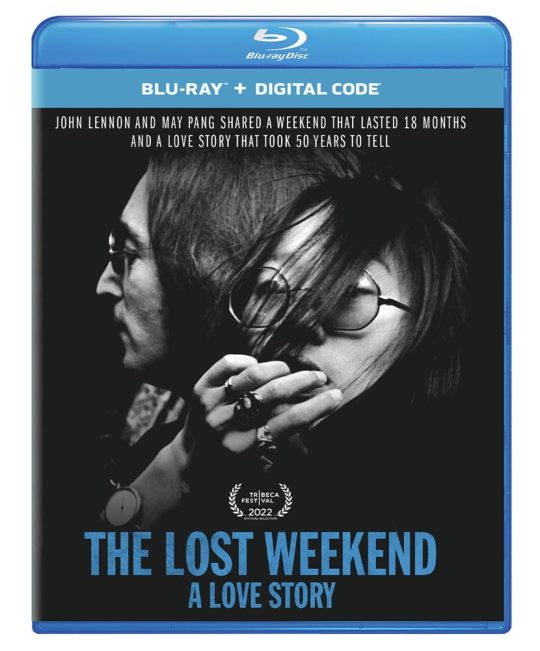
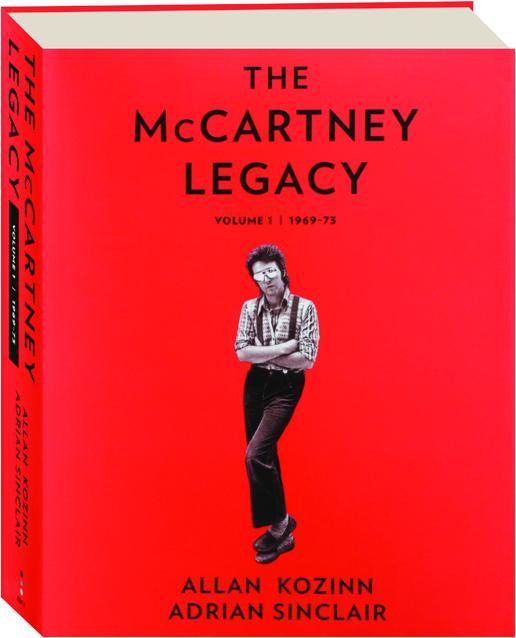
The Lost Weekend A Love Story (DVD, Blu-Ray, Streaming) 🥤 The McCartney Legacy by Allan Kozinn and Adrian Sinclair (Hardback and audio book!) 🐏
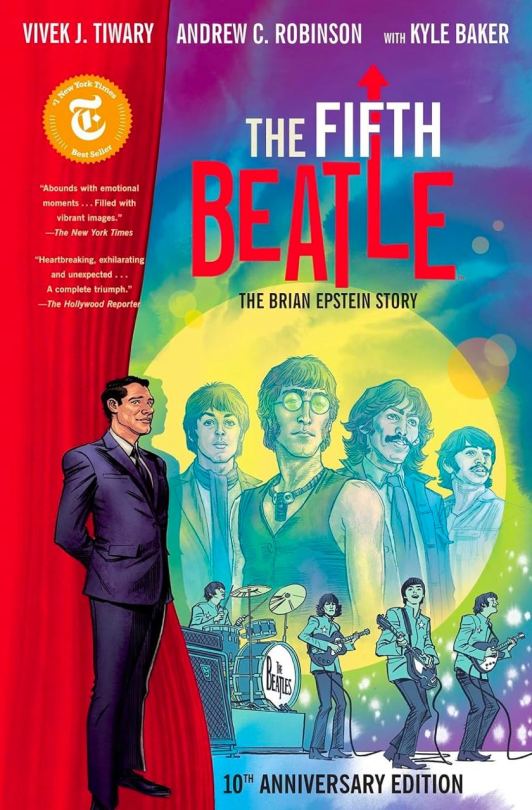
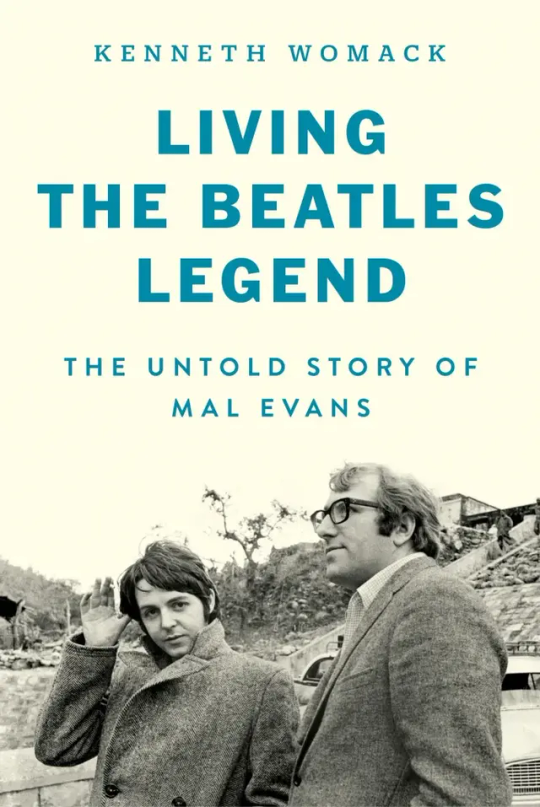
The Fifth Beatle (10th Anniversary edition) by Vivek Tiwary 🍏 Living the Beatles Legend: The Untold Story of Mal Evans by Kenneth Womack ⏰
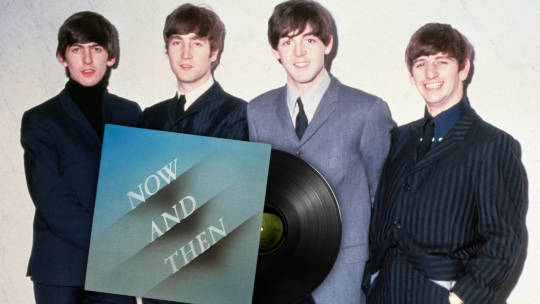
Now and Then, new Beatles single!! 📀
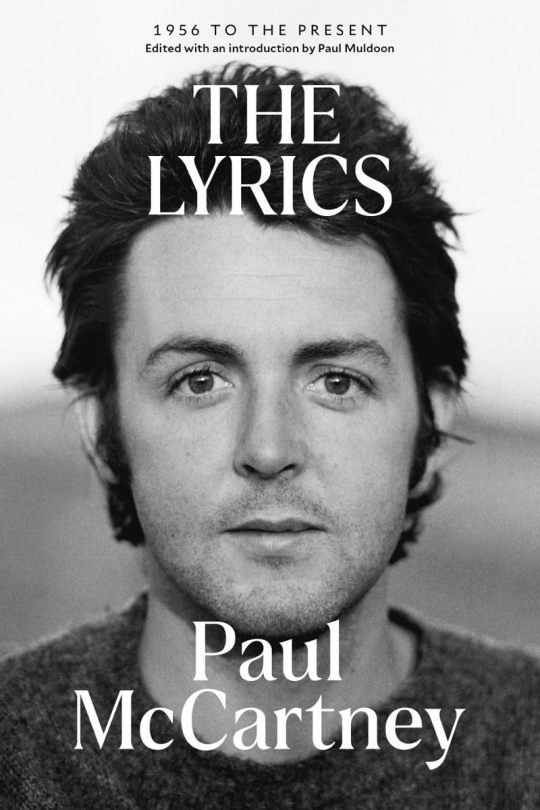
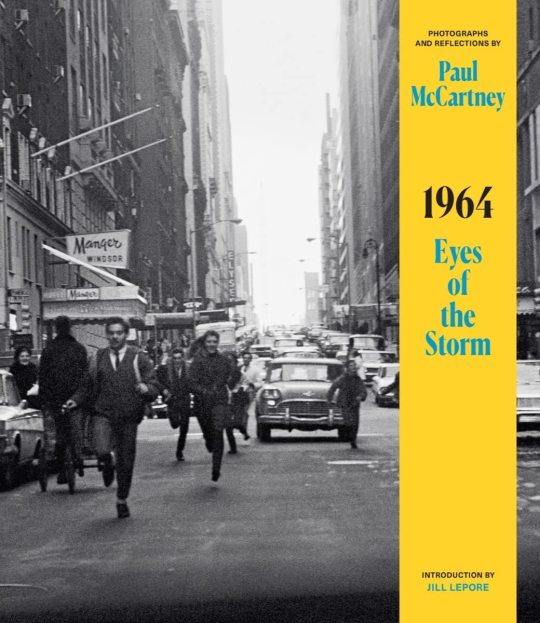
The Lyrics: 1956 to Present by Paul McCartney and Paul Muldoon (now in Paperback) 🎁 Eyes of the Storm by Paul McCartney 📸
Related AKOM podcasts: Reclaimed Weekend AKOM Talks w/ May Pang Frankensongs! AKOM Talks w/ Adrian Sinclair and Allan Kozinn The Fifth Beatle AKOM Talks w/ Vivek Tiwary The Mal Evans Story AKOM Talks w/ Ken Womack Eleanor Rigby: (The Lyrics podcast) Now and Then Reactions (IamtheEggpod)
#AKOM#recs#we aren't getting kickbacks#LOL#just thought we'd share our recs#another kind of mind#beatles
39 notes
·
View notes
Text










Jane Asher portrayed by her boyfriend, Paul McCartney, late 1963🌺🌺🌺
Picture 1- 7 shared on his latest book "Eyes of the storm: 63'-64'"🍀
Picture 8-10 from his book “The lyrics 1956 to the present”🌸
Via @ladyjaneasher on Instagram🍁
3 notes
·
View notes
Text
new hq pictures of john lennon in paris from paul mccartney's new book "from the lyrics: 1956 to the present"
📷 paul mccartney


11 notes
·
View notes
Text
Temporary Secretary (September 1980)
youtube
Not a lot of people today know or remember who Alfred Marks was, but there used to be agencies around London called Alfred Marks Bureaus – not to be confused with Alfred Marks the old-time comedian, of course. The bureaus would be advertised in newspapers and various directories. And I thought, ‘Well, I’ll just address it to Mr Marks.’ People often say, ‘Oh, you work so hard,’ and I say, ‘We don’t work; we play.’ I try to keep that in the front of my brain when things are getting tiresome. ‘Jesus, we’ve worked too hard. No, we’ve played too hard.’ The idea of needing a secretary, but only a temporary one, just made me smile. … A good thing with this song, though, is that there’s nothing overtly sexual; it’s just very tongue-in-cheek. Any inference that the protagonist is keeping the secretary late at night to do other things would be in the mind of the listener.
(Paul McCartney, The Lyrics: 1956 to the Present, 2021)
I did have temporary secretaries. After I left Apple I still had business stuff coming up, so in trying to figure out how I could cope with that there were a couple of times I just grabbed someone to just put my letters in order and help. But that track isn’t about a specific person. What it’s about is, there was a guy called Alfred Marks, he had the Alfred Marks Bureau – he had the same name as a comedian on the radio when I was growing up. So it was just the funny paradox of seeing adverts for the Alfred Marks Bureau, the idea of some comedian having a bureau was just funny. It said ‘Temporary Secretary’, and I thought, that’s a kind of funky thought. Then there was the secretary thing: take a letter Miss Smith, sit on my lap… all that kind of stuff.
(Paul McCartney, The Quietus, 2011)
It was Alfred Marks Secretarial Bureau. And he was a comedian. When I was growing up, he was a famous comedian. But he sort of gave it up and got into this business. It was always a fun thing. When I thought of Alfred Marks Bureau, it was a bit like having the Ken Dodd Office Bureau, you know, just like, mildly amusing.
(Paul McCartney, interview with Adam Buxton, 2020)
RM: Do you use a computer? PM: Pencil and paper. I’m not a typist. Funnily enough, John became a red-hot typist towards the end of his life. He had always had this “Arts Correspondent in Kowloon” kind of dream. But for me it’s pencil and paper by the bed . . . those moments between falling asleep and just before waking are good. I’ve got this little book that Stelly [his daughter, Stella] gave me and it’s full of scribbles and drawings.
(Paul McCartney, interview with Roger McGough, March 10th, 2001)
JOHN: He makes a lot up, like a novelist, you know. SHEFF: Uh— JOHN: You hear lots of McCartney-influenced songs going on, now on the radio. These stories about boring people doing – being postmen, and secretaries, and writing old – I – you know. I’m not interested in writing third[-person], but I like to write about me. ‘Cause I know about me. I don’t know anything about secretaries, and postmen, and – [laughs] whatever.
(John Lennon, August, 1980, interview with David Sheff)
And, of course, the b-side of Temporary Secretary was Secret Friend:
Here we are Where are we Cast adrift on some uncharted sea I know we'll find our way I know we'll reach the end If you will say you'll be my secret friend I need ya

For our joy The Beatles and Ken Dodd (the one Paul was thinking about while writing Temporary Secretary)
youtube
#the power of context#temporary secretary#paul mccartney#john lennon#interview: paul#interview: john#john and paul#Youtube#secret friend#ken dodd#the songs we were singing
32 notes
·
View notes